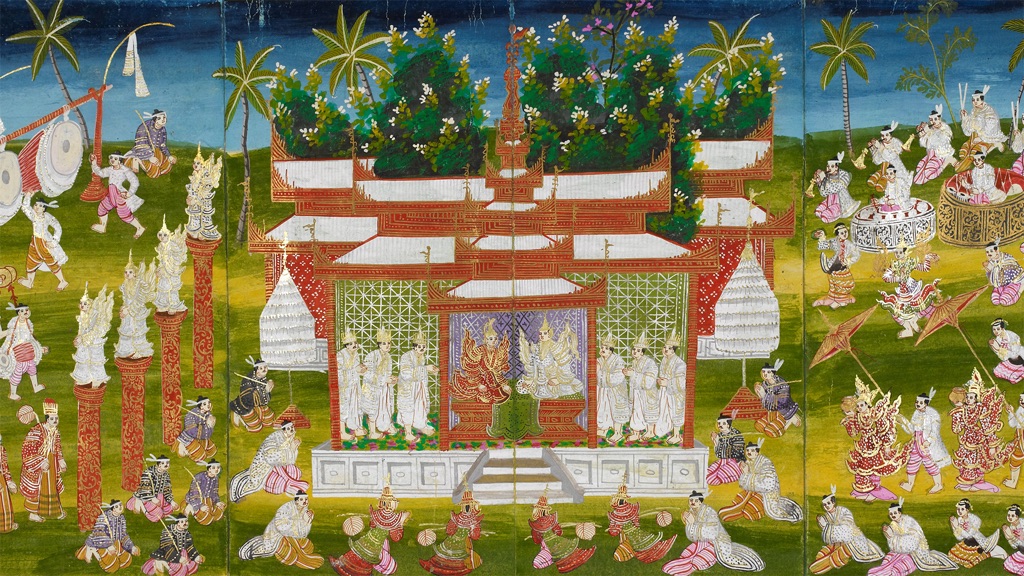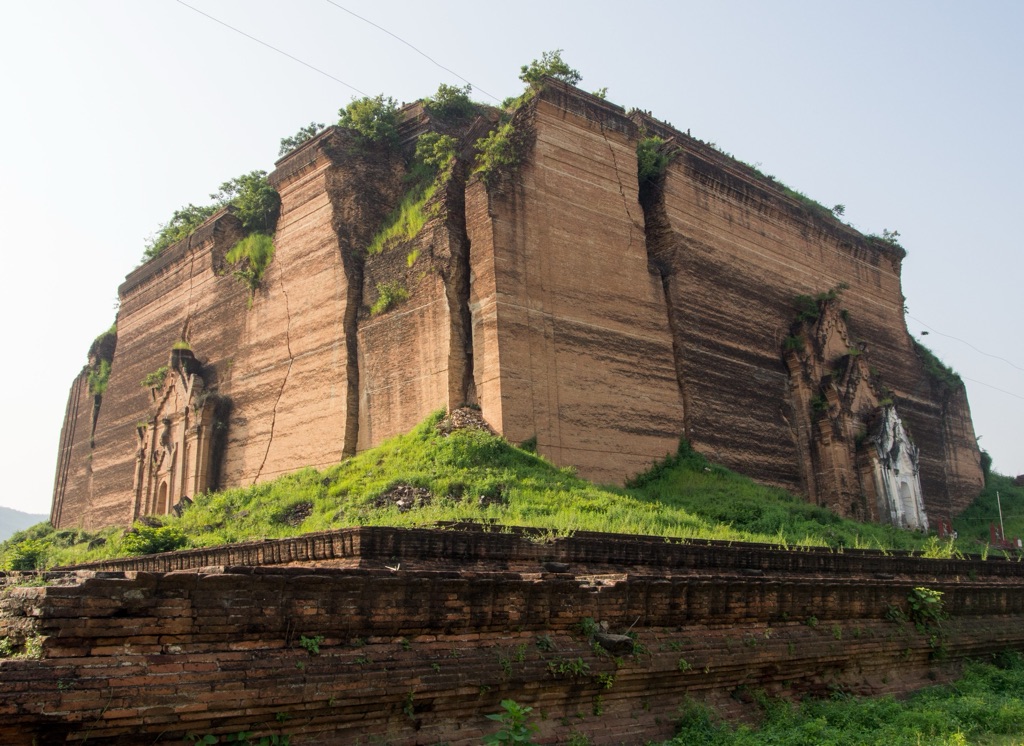The Mingun Pahtodawgyi stands as an iconic monument in Myanmar, reflecting a blend of history, culture, and architectural grandeur. Originally envisioned by King Bodawpaya in the late 18th century, this incomplete stupa would have been the world’s largest, but construction ceased after the king’s death. Despite its unfinished state, the structure commands attention, with vast dimensions and the unique cracks caused by an earthquake in 1839. Situated on the western bank of the Irrawaddy River, it is accessible by a pleasant boat ride from Mandalay, adding to the allure of this historical site.
Konbaung Dynasty

The Konbaung Dynasty, the last in a long line of monarchies that ruled over Myanmar (formerly Burma), stands as a testament to the resilience and complexity of Burmese society before the advent of colonial rule. Founded in 1752 by King Alaungpaya, the dynasty emerged from the ashes of the Taungoo Dynasty, asserting its dominance with a combination of military prowess and diplomatic acumen. Under the leadership of its early kings, the Konbaung Dynasty expanded its territory to include not only the entirety of Myanmar but also parts of Thailand and Laos, showcasing the ambition and strategic capabilities of its rulers.
The reign of King Bodawpaya (1782-1819), one of the most notable monarchs of the Konbaung Dynasty, exemplifies the dynasty’s zenith. His ambitious campaigns and cultural projects, including the unsuccessful attempts to conquer Siam (modern-day Thailand) and the construction of the Mingun Pagoda, which was intended to be the largest in the world, reflect a period of both grandeur and overreach. These endeavors not only strained the kingdom’s resources but also sowed the seeds for future conflicts with neighboring powers and internal dissent. Yet, it was under his rule that the dynasty saw significant advancements in literature, law, and religion, particularly the promotion of Theravada Buddhism, which played a crucial role in shaping the identity and moral fabric of Myanmar.
However, the dynasty’s expansionist policies and the resulting military campaigns were a double-edged sword. They led to the accumulation of vast territories but also provoked multiple wars with the British Empire, which were ultimately disastrous for the Konbaung Dynasty. The First Anglo-Burmese War (1824-1826) marked the beginning of the end, resulting in significant territorial losses and the imposition of a harsh treaty that undermined the dynasty’s sovereignty. The subsequent wars in 1852 and 1885 further weakened the dynasty, leading to the complete annexation of Myanmar by the British Empire in 1885, an event that marked the end of not only the Konbaung Dynasty but also the era of indigenous rule in Myanmar.

The legacy of the Konbaung Dynasty is a complex tapestry of military conquests, cultural flourishing, and the eventual loss of sovereignty. It serves as a poignant reminder of the challenges faced by pre-colonial states in the face of expanding European empires. The dynasty’s efforts to modernize the state and its military, the cultural renaissance it fostered, and its ultimate downfall provide invaluable insights into the dynamics of power, resistance, and adaptation in the face of overwhelming external pressures. As historians, we delve into the story of the Konbaung Dynasty not only to understand the past but also to glean lessons that resonate with the challenges of nation-building and cultural preservation in the modern world.
Konbaung Dynasty FAQs
Who was the founder of the Konbaung dynasty?
The founder of the Konbaung dynasty was King Alaungpaya, who ascended to the throne in 1752. He was originally a village chief named Aung Zeya from the small town of Moksobo. Demonstrating exceptional leadership and military skills, he unified the regions that had been fragmented after the fall of the Taungoo Dynasty and established the Konbaung Dynasty, which would become the last dynasty to rule over Myanmar before the British colonization.
How did the Konbaung dynasty end?
The Konbaung dynasty came to an end in 1885 with the British annexation of Myanmar, following the Third Anglo-Burmese War. The last king of the Konbaung dynasty, King Thibaw, was defeated and subsequently exiled to Ratnagiri, India, by the British. This marked the end of the monarchy in Myanmar and the beginning of British colonial rule, which lasted until Myanmar’s independence in 1948.
How many kings are there in the Konbaung dynasty?
The Konbaung dynasty was ruled by 11 kings over its 133-year history, from its founding in 1752 by King Alaungpaya until the fall of King Thibaw in 1885. Each king contributed to the expansion and consolidation of the dynasty’s power, although their reigns were also marked by internal strife, rebellion, and conflicts with neighboring territories and colonial powers.
What was the last dynasty of Myanmar?
The last dynasty of Myanmar was the Konbaung Dynasty, which ruled from 1752 until its fall in 1885. It was established by King Alaungpaya and is known for its efforts to modernize the kingdom and resist British colonial forces. Despite its efforts to maintain independence, the dynasty ultimately fell to the British, marking the end of Myanmar’s monarchical rule and the beginning of colonial administration.

